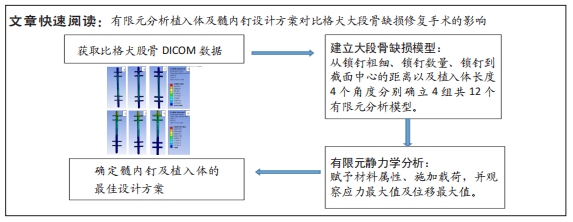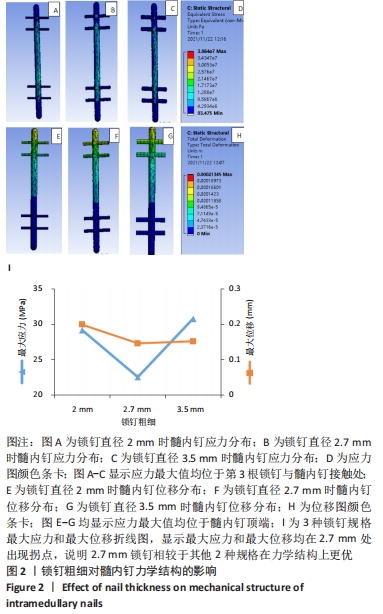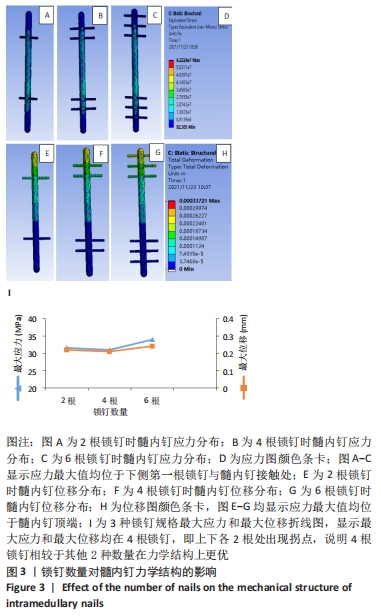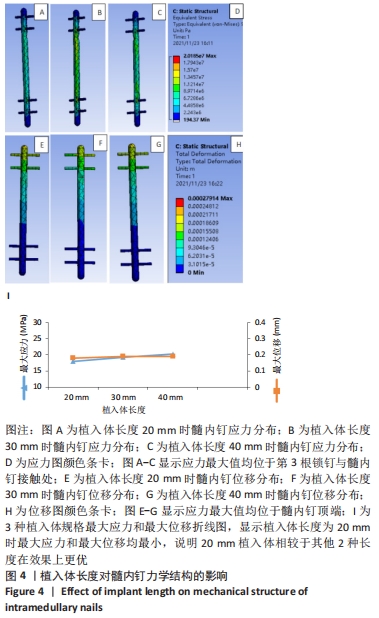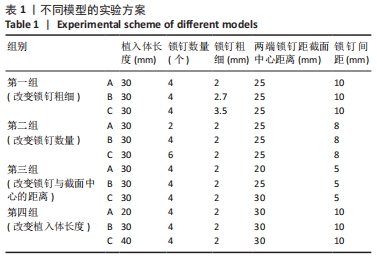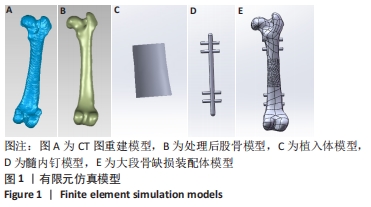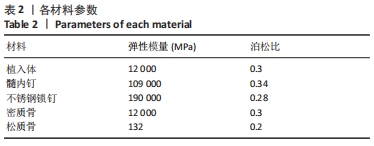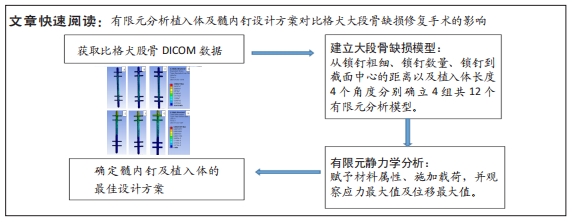[1] SAHIJWANI H, SALUNKE AA, WARIKOO V, et al. Use of Free Anterolateral Thigh Flap in Reconstruction of Soft Tissue Defects in Orthopedic Oncology: What are the Outcomes? Indian J Orthop. 2020;55:246-255.
[2] FERNÁNDEZ GARRIDO M, PEREIRA N, LÓPEZ FERNÁNDEZ S, et al. Turbocharged bilateral pedicled DIEP flap for reconstruction of thigh defect without recipient vessels: A case report. Microsurgery. 2018; 38(3):324-327.
[3] MYEROFF C, ARCHDEACON M. Autogenous bone graft: donor sites and techniques. J Bone Joint Surg. 2011;93(23):2227-2236.
[4] WANG F, JIA S, LI M, et al. Effect of the medial collateral ligament and the lateral ulnar collateral ligament injury on elbow stability: a finite element analysis. Comput Methods Biomech Biomed Engin. 2021; 24(13):1517-1529.
[5] SPYROU LA, AGORAS M, DANAS K, et al. A homogenization model of the Voigt type for skeletal muscle. J Theor Biol. 2017;414:50-61.
[6] 张帅,屠重棋,段宏,等.股骨近端骨缺损与骨折相关性的有限元分析[J].四川大学学报(医学版),2011,42(2):273-276+279.
[7] DESYATOVA A, POULSON W, MACTAGGART J, et al. Cross-sectional pinching in human femoropopliteal arteries due to limb flexion, and stent design optimization for maximum cross-sectional opening and minimum intramural stresses. J R Soc Interface. 2018;15(145): 20180475.
[8] TUNCER M, COBB JP, HANSEN UN, et al. Validation of multiple subject-specific finite element models of unicompartmental knee replacement. Med Eng Phys. 2013;35:1457-1464.
[9] WEI X, ZHAO L, XU Z, et al. Effects of cortical bone thickness at different healing times on microscrew stability. Angle Orthod. 2011;81(5):760-766.
[10] PLENERT T, GARLICHS G, NOLTE I, et al. Biomechanical comparison of a new expandable intramedullary nail and conventional intramedullary nails for femoral osteosynthesis in dogs. PloS One. 2020;15(5): e0231823.
[11] MAUFFREY C, BARLOW BT, SMITH W. Management of segmental bone defects. Am Acad Orthop Surg. 2015;23(3):143-153.
[12] SILVESTRI C, HEATH D, RUPAREL T, et al. Validation of a biofidelic LS-DYNA model and comparison vs. a traditional ATD finite element model for assessing knee-thigh-hip injuries. Vehicle Safety. 2010;5:21-34.
[13] XIE S, CONLISK N, HAMILTON D, et al. A finite element analysis of tibial tritanium cones without stems in varying bone defects. Knee. 2020; 27(3):656-666.
[14] 董衍生. 可吸收锁钉鞘预防带锁髓内钉应力遮挡的有限元分析[D].天津:天津理工大学,2018.
[15] 檀臻炜,汪丙昂,姚一民,等.兔膝关节力学有限元分析及软骨缺损模型的建立[J].西南国防医药,2018,28(12):1213-1217.
[16] ZHANG T, WEI Q, ZHOU H, et al. Three-dimensional-printed individualized porous implants: A new “implant-bone” interface fusion concept for large bone defect treatment. Bioact Mater. 2021;6(11): 3659-3670.
[17] ACCADBLED F, THEVENIN LEMOINE C, POINSOT E, et al. Bone reconstruction after malignant tumour resection using a motorized lengthening intramedullary nail in adolescents: preliminary results. J Child Orthop. 2019;13(3):324-329.
[18] ATTIAS N, THABET AM, PRABHAKAR G, et al. Management of extra-articular segmental defects in long bone using a titanium mesh cage as an adjunct to other methods of fixation. Bone Joint J. 2018;100-B(5): 646-651.
[19] 贾超,喻胜鹏,吴宏日,等.Masquelet技术二期髓内钉固定重建术治疗胫骨感染性骨缺损[J].局解手术学杂志,2020,29(1):29-33.
[20] 韩世翀,李昌,刑海洋,等.胫骨近端关节外骨折两种内固定方式的有限元分析[J].中国组织工程研究,2021,25(15):2329-2333.
[21] XU L, ZHOU J, WANG Z, et al. Reconstruction of bone defect with allograft and retrograde intramedullary nail for distal tibia osteosarcoma. Foot Ankle Surg. 2018;24(2):149-153.
[22] 李智,王臻,孙峥.有限接触式带锁髓内钉的有限元分析及临床应用[J].中国矫形外科杂志,2006,14(14):1082-1085+1037.
[23] YU JJ, ZHANG C, LI L, et al. Internal fixation treatments for intertrochanteric fracture: a systematic review and meta-analysis of randomized evidence. Sci Rep. 2015;5(1):18195.
[24] SIPAHIOGLU S, ZEHIR S, SARIKAYA B, et al. Comparision of the expandable nail with locked nail in the treatment of closed diaphyseal fractures of femur. Niger J Clinical Prac. 2017;20(7):792-798.
[25] BASARAN T, CALBIYIK M, BASARAN PO, et al. Blade expandable intramedullary nails for fixation of tibial shaft fractures. Acta Orthop Belg. 2019;85(4):472-476.
[26] PLENERT T, GARLICHS G, NOLTE I, et al. Biomechanical comparison of a new expandable intramedullary nail and conventional intramedullary nails for femoral osteosynthesis in dogs. PLOS ONE. 2020;15(5):e0231823.
[27] GALVAIN T, CHITNIS A, PAPAROUNI K, et al. The economic burden of infections following intramedullary nailing for a tibial shaft fracture in England. BMJ Open. 2020;10(8):e035404.
[28] TAKASHIMA K, NAKAHARA I, UEMURA K, et al. Clinical outcomes of proximal femoral fractures treated with a novel carbon fiber-reinforced polyetheretherketone intramedullary nail. Injury. 2020;51(3):678-682.
[29] MITCHELL P, LEE AK, COLLINGE CA, et al. Jahangir A. Early comparative outcomes of carbon fiber-reinforced polymer plate in the fixation of distal femur fractures. J Orthop Trauma. 2018;32:386-390.
[30] 徐国平.四肢创伤骨折后骨不连的植入物内固定术治疗的临床对照分析[J].临床医药文献电子杂志,2018,5(28):60-61.
[31] 孙晓亮,孙有声,刘志伟,等.交锁髓内钉治疗胫骨近端骨折(附46例报告)[J].骨与关节损伤杂志,2000,15(6):451-452.
|
